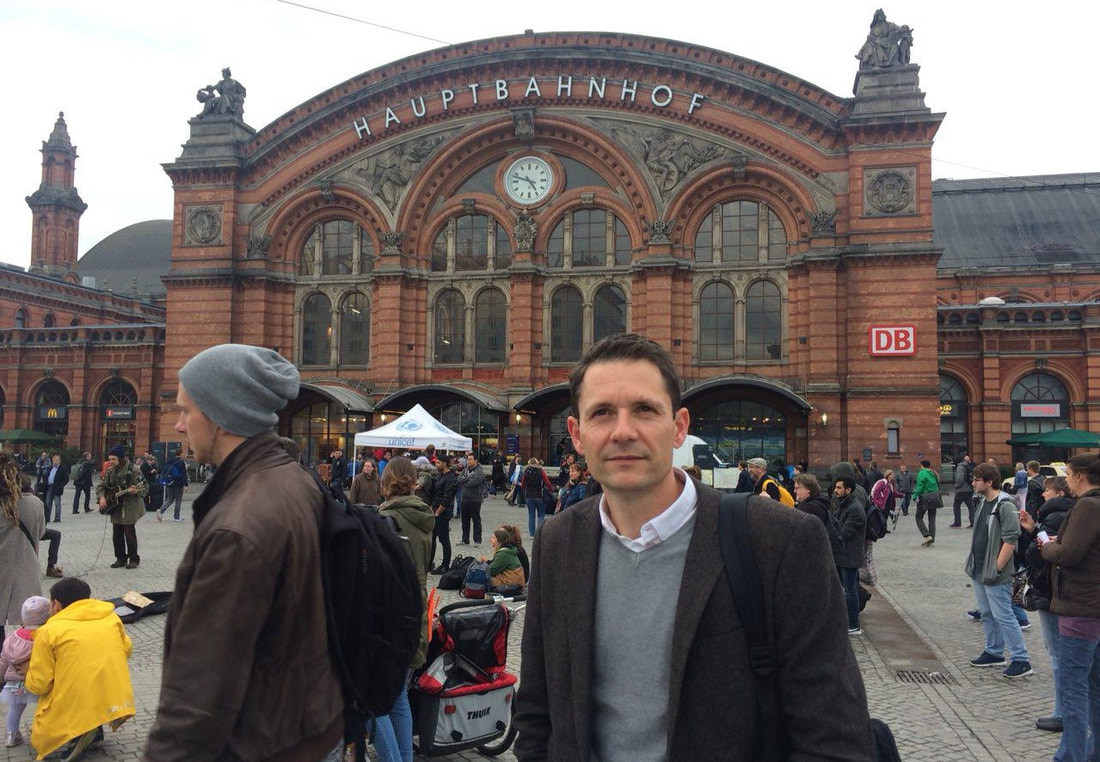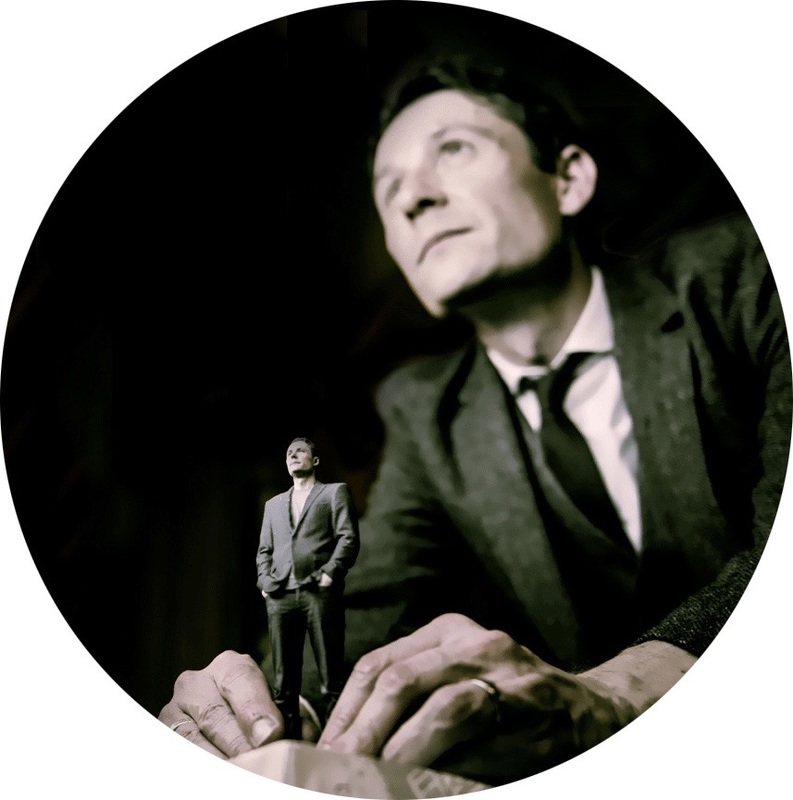|
A short report on the walking activity that I delivered with Michael Gallagher last week, our contribution to the 3rd Bremen Conference on Multimodality. Through this 'paper-as-performance' Michael and I sought to make the case for the theoretical and methodological compatibility of multimodality and mobile learning, for instance as a way of investigating our urban surroundings. We also wanted to raise questions about the complex relationship between researcher and the digital, and how this might affect work within multimodality. You can read the background to our exercise on this project site, including a theoretical rationale which explains for instance why Smartphones and the Telegram app were central to the experience. We can't control the weather: surveying the skies above our meeting point ahead of the excursion. Despite rain directly beforehand, as well as a full day of conference activity, 19 colleagues assembled at Bremen's main train station to participate in the excursion. Michael and I were really glad that so many people wanted to take part in the walk, bearing in mind the inclement weather, fatigue and Bremen's competing evening attractions. Perhaps some of the enthusiasm we saw for the activity is reflected in the format of the exercise, explained in the invitation written into our conference abstract:
Rather than re-tracing what took place during the excursion I am instead making a record here of some of the key ideas that I will take away from the experience. This following points build on feedback we received after the excursion, as well as subsequent conversations between Michael and myself in the following days.
Perhaps more than anything though, what Michael and I were most excited about in the days following the excursion in Bremen was the potential for this type of digitally distributed mobile learning to be adapted to suit a range of different learning settings. When Michael and I first undertook one of these excursions in January 2015, alongside our colleague Jeremy Knox, we were foremost interested in the walking exercise as an approach that could be adopted in a range of different educational contexts. Looking back at our excursion through Bremen, I think we are getting close to where we wanted to reach. We wish to thank Andrew Kirk, Cinzia Pusceddu-Gangarosa (both University of Edinburgh) and Ania Rolinska (University of Glasgow) for pavement-testing earlier versions of the activity described here. Meanwhile Jana Pflaeging (Universitat Bremen) enthusiastically supported our plan to deliver this activity as part of the 3rd Bremen Conference on Multimodality.
See also: Dialogue in the Dark Wondering about the city: making meaning in Edinburgh's Old Town Dérive in Amsterdam
0 Comments
Leave a Reply. |
Search categories
All
I am a Lecturer in Digital Education (Education Futures), within the Centre for Research in Digital Education at The University of Edinburgh.
@james858499 [email protected] |

